Guy Harvey Foundation Awards $40,000 in Scholarships to Empower Student Researchers at Florida Colleges and Univiersities – Technologist
Meet the Scholars
Annais Muschett-Bonilla is a Ph.D. student from Houston, Texas. She is studying biological sciences, with a focus on ecology and evolution, at Florida State University. Her research focuses on the maternal reproduction of elasmobranch fish, which includes sharks, rays, skates, and sawfish. These fish have various ways of nourishing their embryos, and each method has different physiological and energetic demands of the mother. Annais’s research seeks to quantify the effects of reproductive energetic demands on the performance of pregnant elasmobranchs, particularly in mature female Hypanus sabinus – a type of stingray – and possible influences on maternal survival.
Given their slow repopulation rates and diverse embryo nourishment strategies, understanding and prioritizing species with similar reproductive strategies are crucial for efficiently managing and conserving elasmobranch species, and safeguarding their diversity.
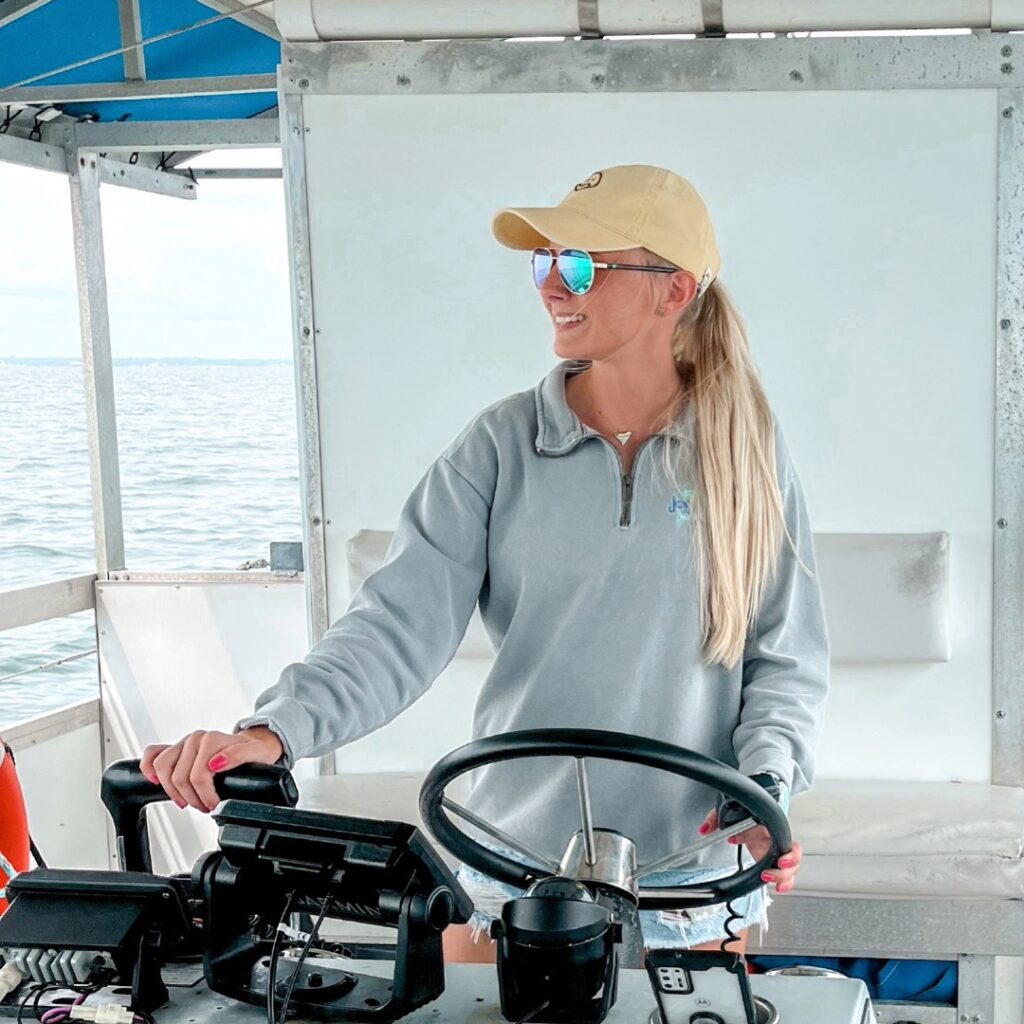
Alexis Mitchem is a Ph.D. student from Pensacola, Florida. She is studying marine science at the University of South Florida. Her research focuses on DNA barcoding to identify fish eggs and efforts to make molecular research tools more accessible and affordable. Accurate identification of fish’s early life stages is critical for conservation biology; however, eggs are challenging to identify due to a lack of distinguishing morphological features. Her research project involves using DNA barcoding – a tool used for species identification based on specific genes – to identify fish eggs down to the species level.
Building on ten years of fish spawning data during the summer season on the West Florida Shelf, Alexis plans to expand sample collection to cover all seasons over several years to determine when other important fish species are spawning and will team up with a physical oceanographer to model egg movement by surface currents.
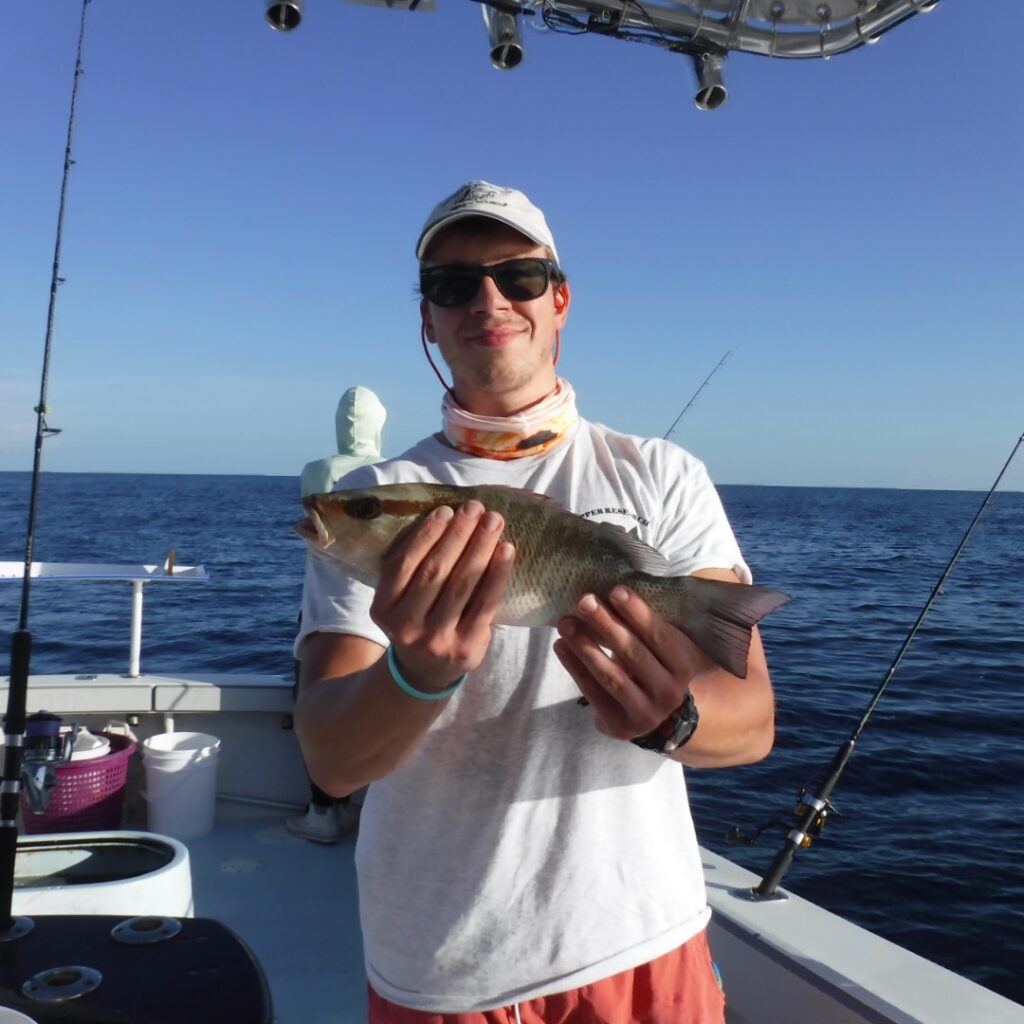 Eric Bovee is a Master’s student from Queens, New York. He is studying fisheries and aquatic sciences at the University of Florida. His research focuses on tagging and tracking the Gray Snapper (Mangrove Snapper), a species found in spawning aggregations located 80-100 miles offshore in the Florida Middle Grounds. Engaging in extensive fieldwork, he tags the fish during their offshore presence and subsequently collaborates with fishers to recover valuable information about the fish, including their recovery locations. Eric’s research is all about using dispersal modeling to predict where Gray Snapper eggs and larvae go after they’re spawned in the ocean.
Eric Bovee is a Master’s student from Queens, New York. He is studying fisheries and aquatic sciences at the University of Florida. His research focuses on tagging and tracking the Gray Snapper (Mangrove Snapper), a species found in spawning aggregations located 80-100 miles offshore in the Florida Middle Grounds. Engaging in extensive fieldwork, he tags the fish during their offshore presence and subsequently collaborates with fishers to recover valuable information about the fish, including their recovery locations. Eric’s research is all about using dispersal modeling to predict where Gray Snapper eggs and larvae go after they’re spawned in the ocean.
This is important because too much fishing in these spawning areas can be harmful. By figuring out where the larvae end up, Eric can help us understand the connectivity between the offshore spawning areas and the coastal areas where they live and grow up.
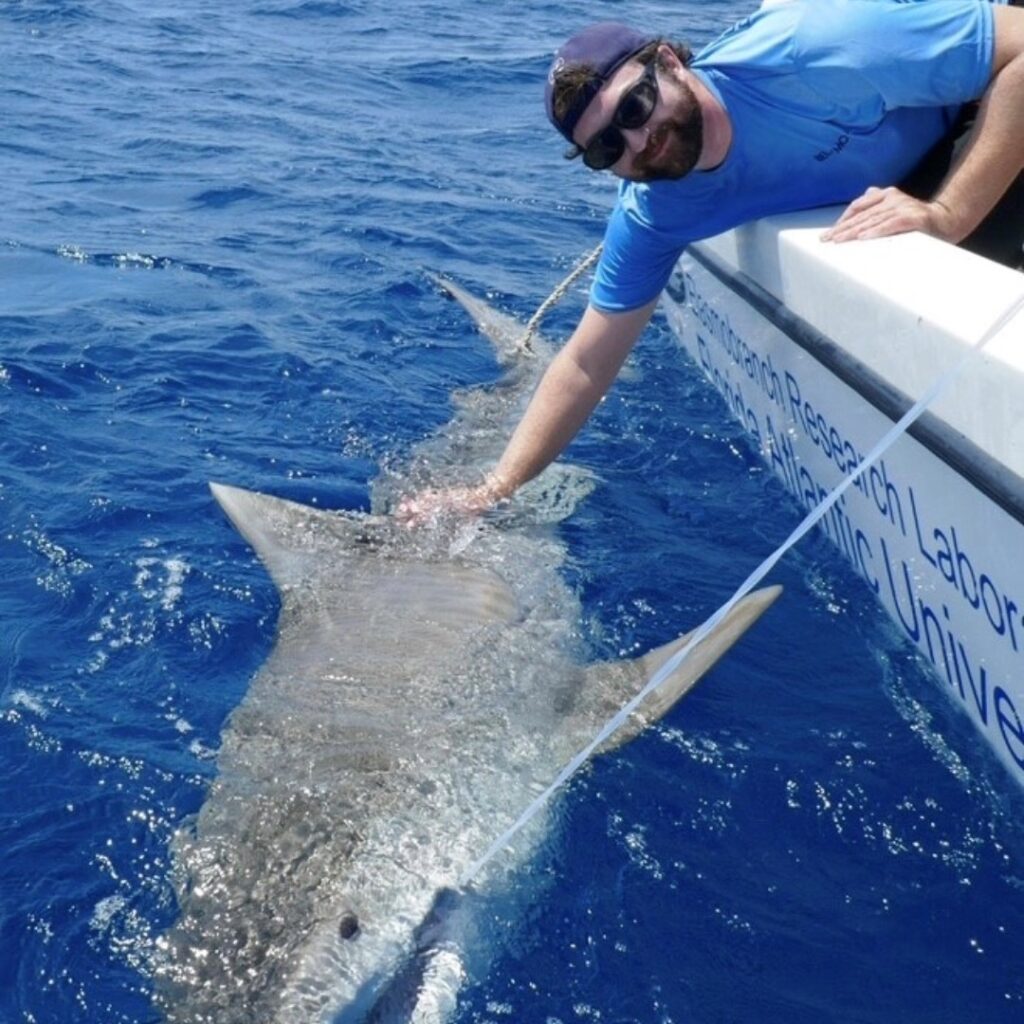 Zeke Tuszynski is a Master’s student from Wenatchee, Washington. He is studying biological sciences at Florida Atlantic University. His research focuses on studying the migration patterns of Blacktip sharks along the East Coast of the United States. Taking advantage of the large gatherings of Blacktip sharks in Southeast Florida during winter, the research aims to investigate the extent of their northward migration along the US eastern seaboard using satellite transmitters, and the environmental factors influencing their movement.
Zeke Tuszynski is a Master’s student from Wenatchee, Washington. He is studying biological sciences at Florida Atlantic University. His research focuses on studying the migration patterns of Blacktip sharks along the East Coast of the United States. Taking advantage of the large gatherings of Blacktip sharks in Southeast Florida during winter, the research aims to investigate the extent of their northward migration along the US eastern seaboard using satellite transmitters, and the environmental factors influencing their movement.
Given the Near Threatened Species status of Blacktip sharks, understanding their habitat use and migratory patterns becomes crucial for management and conservation efforts.
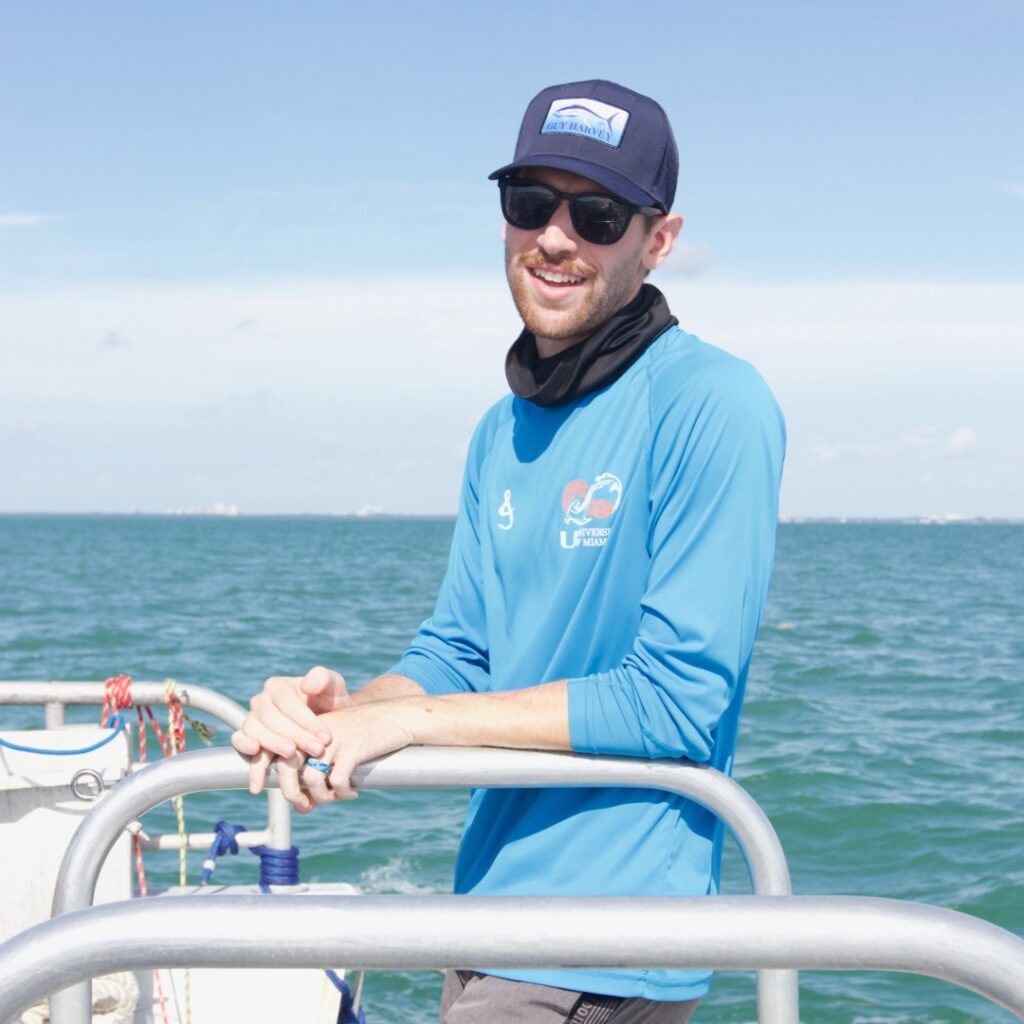 John Francis Hlavin is a Ph.D. student from Vienna, Virginia. He is studying environmental science and policy at the University of Miami. His research focuses on the importance of various ecological dynamics to the management of nursery areas for coastal predatory fish. He is particularly interested in using minimally invasive techniques to study the ecology of juvenile great hammerhead sharks within Biscayne Bay – an identified great hammerhead nursery – to better understand how patterns of resource and habitat-use can inform the conservation of this Critically Endangered species at a highly vulnerable life-stage.
John Francis Hlavin is a Ph.D. student from Vienna, Virginia. He is studying environmental science and policy at the University of Miami. His research focuses on the importance of various ecological dynamics to the management of nursery areas for coastal predatory fish. He is particularly interested in using minimally invasive techniques to study the ecology of juvenile great hammerhead sharks within Biscayne Bay – an identified great hammerhead nursery – to better understand how patterns of resource and habitat-use can inform the conservation of this Critically Endangered species at a highly vulnerable life-stage.
Additionally, he also has projects looking at the trophic ecology of the understudied Atlantic guitarfish and the potential impact of invasive lionfish on nursery habitat use in Great Barracuda. By studying these high-priority species and their interactions, John’s work helps us to better manage our local ecosystems for the conservation of South Florida’s predatory fish.
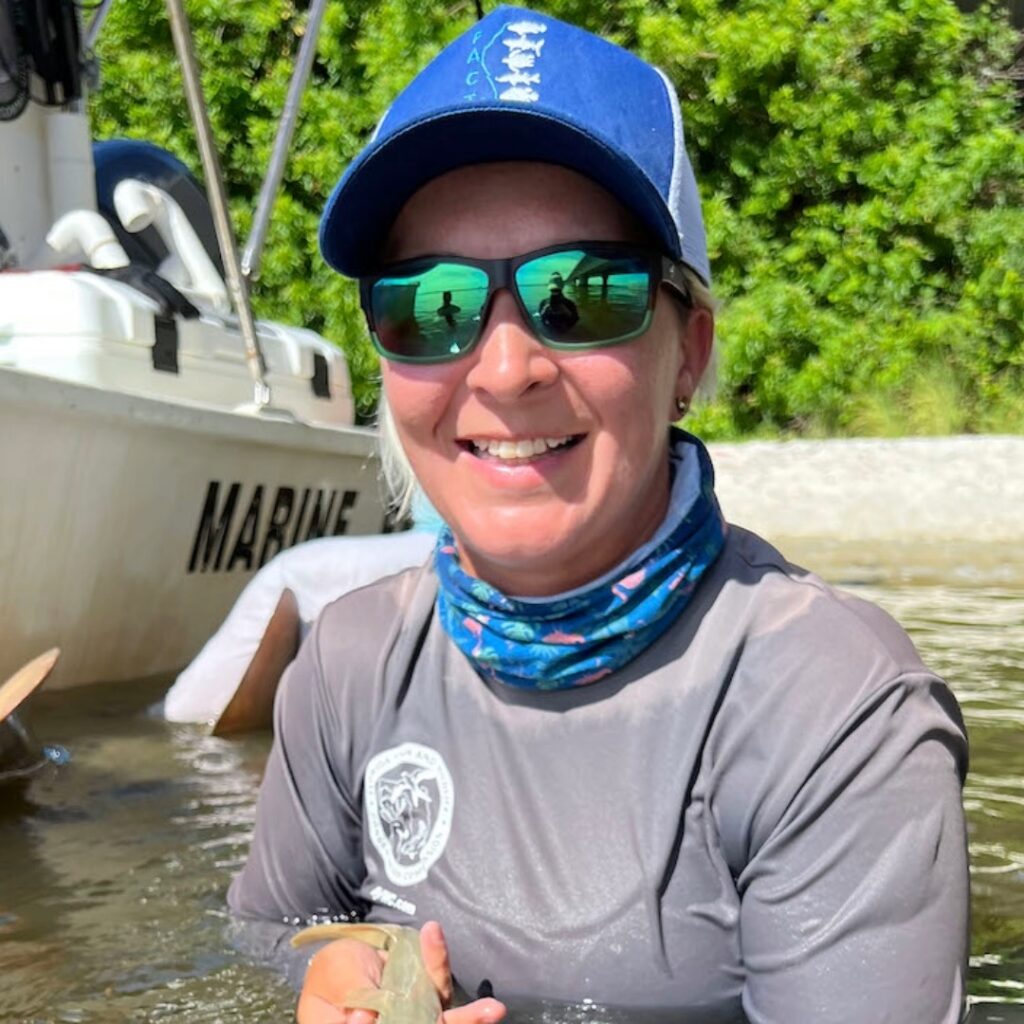 Sarah F. Webb is a Ph.D. candidate from Milltown, New Jersey. She is studying integrative biology at Florida Atlantic University. Her research focuses on evaluating estuary conditions, such as salinity, and its impacts on fish movements and behaviors. Her research examines the potential resurgence of nursery habitat for the endangered smalltooth sawfish in the St. Lucie Estuary, a species historically found in the area. Sarah’s dissertation utilizes extensive fish and water quality monitoring to provide essential insights into the effects of these stressors, such as excessive freshwater inflow, on various fish species, including various estuarine-dependent sportfish, juvenile goliath grouper, and juvenile smalltooth sawfish.
Sarah F. Webb is a Ph.D. candidate from Milltown, New Jersey. She is studying integrative biology at Florida Atlantic University. Her research focuses on evaluating estuary conditions, such as salinity, and its impacts on fish movements and behaviors. Her research examines the potential resurgence of nursery habitat for the endangered smalltooth sawfish in the St. Lucie Estuary, a species historically found in the area. Sarah’s dissertation utilizes extensive fish and water quality monitoring to provide essential insights into the effects of these stressors, such as excessive freshwater inflow, on various fish species, including various estuarine-dependent sportfish, juvenile goliath grouper, and juvenile smalltooth sawfish.
Her work is crucial for resource managers seeking to better understand the dynamics of this unique ecosystem, which is part of the northern Everglades component of the RECOVER program. Understanding how these animals respond spatially to these inputs is vital for species conservation and predicting the impacts of water management decisions on marine populations.
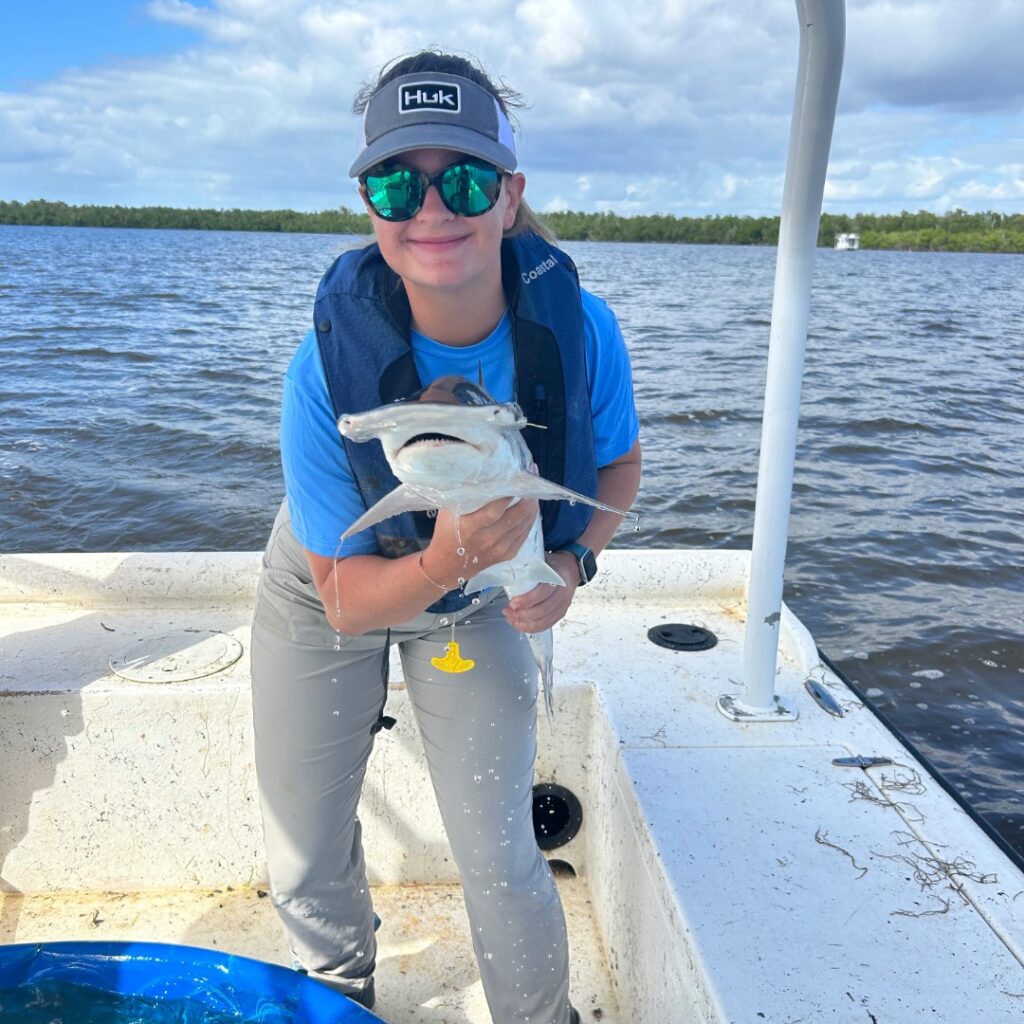 Susannah Cogburn is a Master’s student from Winter Garden, Florida. She is studying environmental science at Florida Gulf Coast University. Her research focuses on the bioaccumulation of contaminants, such as heavy metals, polycyclic aromatic hydrocarbons (PAHs), Per- and polyfluoroalkyl substances (PFAS), and organochlorine pesticides (OCPs) in bull sharks, Carcharhinus leucas. Sharks are apex predators, so contaminant levels are likely high in their tissues, especially in species, like C. leucas, which spend a portion of their life in estuaries with high contaminant loads.
Susannah Cogburn is a Master’s student from Winter Garden, Florida. She is studying environmental science at Florida Gulf Coast University. Her research focuses on the bioaccumulation of contaminants, such as heavy metals, polycyclic aromatic hydrocarbons (PAHs), Per- and polyfluoroalkyl substances (PFAS), and organochlorine pesticides (OCPs) in bull sharks, Carcharhinus leucas. Sharks are apex predators, so contaminant levels are likely high in their tissues, especially in species, like C. leucas, which spend a portion of their life in estuaries with high contaminant loads.
This research results will have direct fisheries impacts by helping to quantify pollutants and their persistence within our local fisheries stock. The bull sharks will also act as a proxy for other marine fishes to identify if the pollutants are present and the direct effect on their osmoregulation – the process of maintaining salt and water balance within the body.
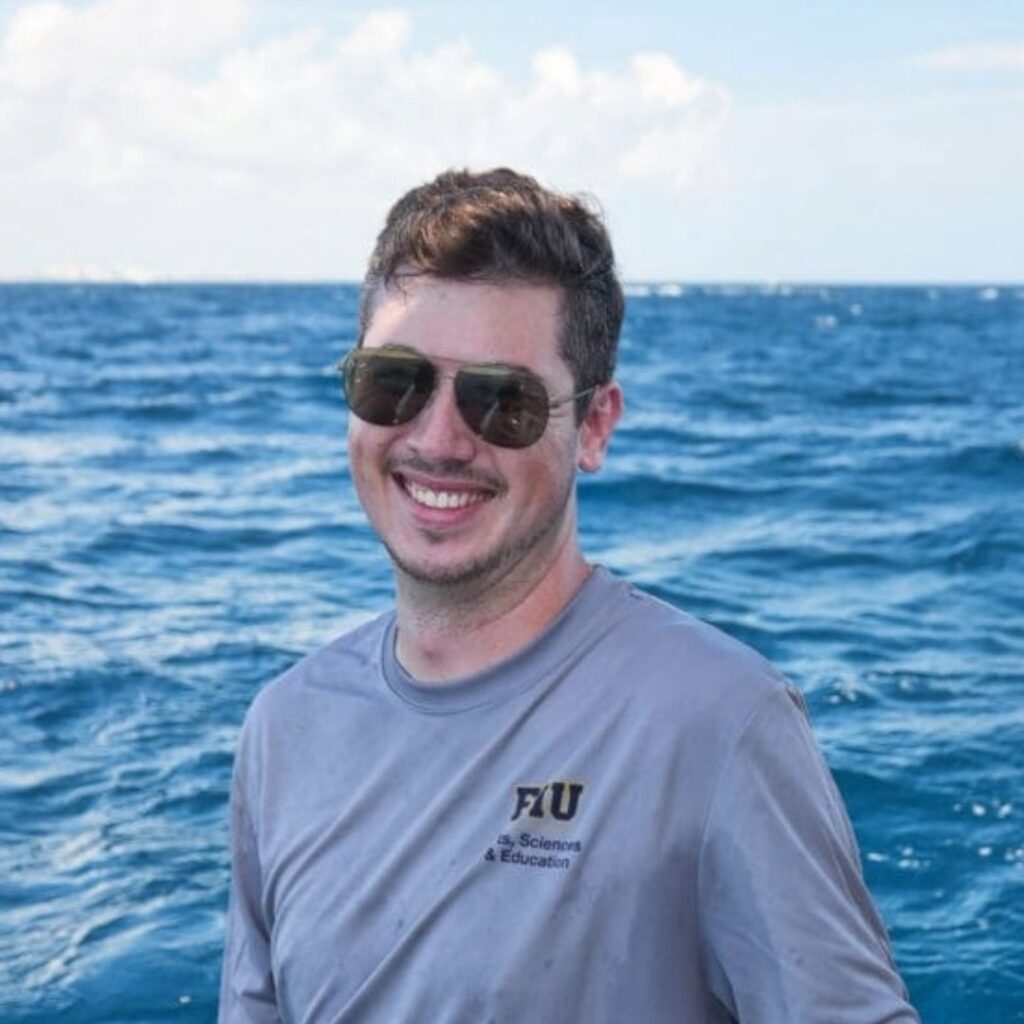 William Sample is a Ph.D. candidate from Jacksonville, Florida. He is studying biology at Florida International University. Will’s research focuses on how environmental factors influence juvenile bull shark habitat use and foraging ecology in the coastal Everglades. His study aims to focus on the energy landscapes sharks encounter, how they change over time and space, and how sharks adapt to them.
William Sample is a Ph.D. candidate from Jacksonville, Florida. He is studying biology at Florida International University. Will’s research focuses on how environmental factors influence juvenile bull shark habitat use and foraging ecology in the coastal Everglades. His study aims to focus on the energy landscapes sharks encounter, how they change over time and space, and how sharks adapt to them.
Given the challenges sharks are likely to face from climate change and sea level rise, Will’s work will be important for the conservation of juvenile sharks and their habitats and in informing restoration and management efforts. By using historical data from over 150 tagged bull sharks and new methods like high-resolution accelerometry, Will aims to provide insights applicable beyond his study area.
About Guy Harvey
Guy Harvey is a unique blend of artist, scientist, diver, angler, conservationist, and explorer, fiercely devoted to his family and his love of the sea. His childhood passion for the ocean and its living creatures not only inspired him to draw but fueled a burning interest that prompted a formal education in marine science. Having graduated with honors in Marine Biology from Aberdeen University in Scotland in 1977, Guy returned home to Jamaica to resume his education, earning his Ph.D. from the University of the West Indies in 1984. Though he gave up a budding career as a marine biologist for that of a highly acclaimed artist, Guy has continued his relentless pursuit to unravel the mysteries of the sea, traveling the world to better understand the habits and habitats of the marine wildlife he paints. For more information, please visit www.guyharvey.com. Follow Guy on Facebook, on Twitter, connect on Instagram, and tune in to see Guy’s latest expeditions on YouTube.
About the Guy Harvey Foundation
With a focused mission to better understand and conserve the ocean environment, the Guy Harvey Foundation (GHF) collaborates with local, national and international organizations to conduct scientific research and provides funding to affiliated researchers who share this objective. The GHF also develops and hosts cutting-edge educational programs that help educators to foster the next era of marine conservationists, ensuring that future generations can enjoy and benefit from a properly balanced ocean ecosystem www.GuyHarveyFoundation.org



